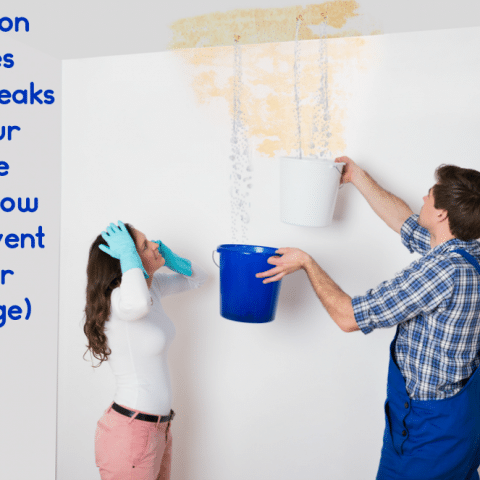Identify Hidden Water Line Leaks: Six Smart Hacks
BookJust how do you feel on the subject of Detecting hidden plumbing leaks?

Early discovery of dripping water lines can mitigate a prospective calamity. Some tiny water leaks may not be noticeable.
1. Examine the Water Meter
Every home has a water meter. Examining it is a surefire way that assists you uncover leakages. For beginners, turn off all the water resources. Ensure no person will flush, utilize the tap, shower, run the cleaning equipment or dishwasher. From there, go to the meter and watch if it will change. Because nobody is utilizing it, there must be no motions. That shows a fast-moving leakage if it relocates. If you identify no changes, wait an hour or two as well as inspect back once again. This suggests you might have a slow-moving leakage that can also be below ground.
2. Check Water Consumption
Assess your water bills and track your water intake. As the one paying it, you should see if there are any discrepancies. If you detect sudden changes, regardless of your intake coinciding, it indicates that you have leakages in your plumbing system. Keep in mind, your water expense ought to fall under the same range on a monthly basis. An abrupt spike in your costs suggests a fast-moving leak.
A stable increase every month, also with the same habits, reveals you have a slow leakage that's additionally slowly escalating. Call a plumber to extensively examine your building, particularly if you feel a cozy area on your floor with piping below.
3. Do a Food Coloring Test
30% comes from bathrooms when it comes to water intake. Test to see if they are running properly. Decline specks of food shade in the tank and also wait 10 minutes. If the shade somehow infiltrates your dish during that time without flushing, there's a leakage between the container and dish.
4. Asses Outside Lines
Do not neglect to examine your exterior water lines also. Needs to water permeate out of the link, you have a loose rubber gasket. One tiny leak can waste loads of water as well as surge your water bill.
5. Examine and Evaluate the Circumstance
Property owners ought to make it a practice to check under the sink counters and also inside cabinets for any bad odor or mold growth. These two red flags indicate a leakage so punctual interest is needed. Doing routine evaluations, even bi-annually, can conserve you from a significant issue.
Check for stainings as well as compromising as most pipelines as well as home appliances have a life expectancy. If you presume leaking water lines in your plumbing system, do not wait for it to rise.
Early detection of leaking water lines can alleviate a possible catastrophe. Some little water leaks might not be visible. Examining it is a surefire method that helps you find leakages. One tiny leakage can throw away heaps of water and surge your water costs.
If you think dripping water lines in your plumbing system, do not wait for it to escalate.
5 Signs that Your Home Has a Hidden Leak
Your water bill is unusually high without explanation
Generally, your water bill tends to stay consistent throughout the year as long as the same number of people live in your household year round. The bill might be higher during certain times of the year, such as summer, when your lawn may require more watering than it does in cooler months. However, if you notice a rise in your water bill that you can’t explain, it’s an indicator that there’s a hidden leak somewhere in your home.
You hear running water
One of the biggest signs that you have a water leak is the sound of rushing water when no plumbing fixtures are on and when no water-using appliances are running. If you hear running water in your walls when no water is being used anywhere in your home, locate your home’s main water shut-off valve, shut off your water supply, and contact a plumber at once.
Your home smells musty
Hidden leaks often occur in dark spaces, such as behind walls or under carpeting. Incidentally, darkness and moisture can create an ideal breeding environment for mold or mildew. If you start to smell mildew or the scent of rotting wood or stagnant water around your home, it’s a fair bet that a leak is the culprit.
You find wet spots around your home
The wet spots usually show up as moist areas in your carpeting. If your home has a basement level, puddles on the floor could indicate a slab leak. Outside, unexplainable puddles or lush, green patches in your yard often mean that there’s a leak in your sewer line or main water line.
You have stains, bubbles, or condensation on your walls/ceiling
Stains or condensation on your walls or ceiling are both major signs of a hidden leak. Also, drywall (AKA. sheetrock) is very absorbent, and as it takes on more water from a leak behind a wall, it will start to bubble, swell, or warp. If you see this happening in your home, don’t wait to contact a plumber before the water damage spreads.
https://www.ezflowplumbingaz.com/blog/2019/june/5-signs-that-your-home-has-a-hidden-leak/

We had been introduced to that report about Top leak detection hacks through a good friend on another domain. If you enjoyed reading our article kindly make sure you remember to share it. Thank you for taking the time to read it.
Guaranteed fix? Call.